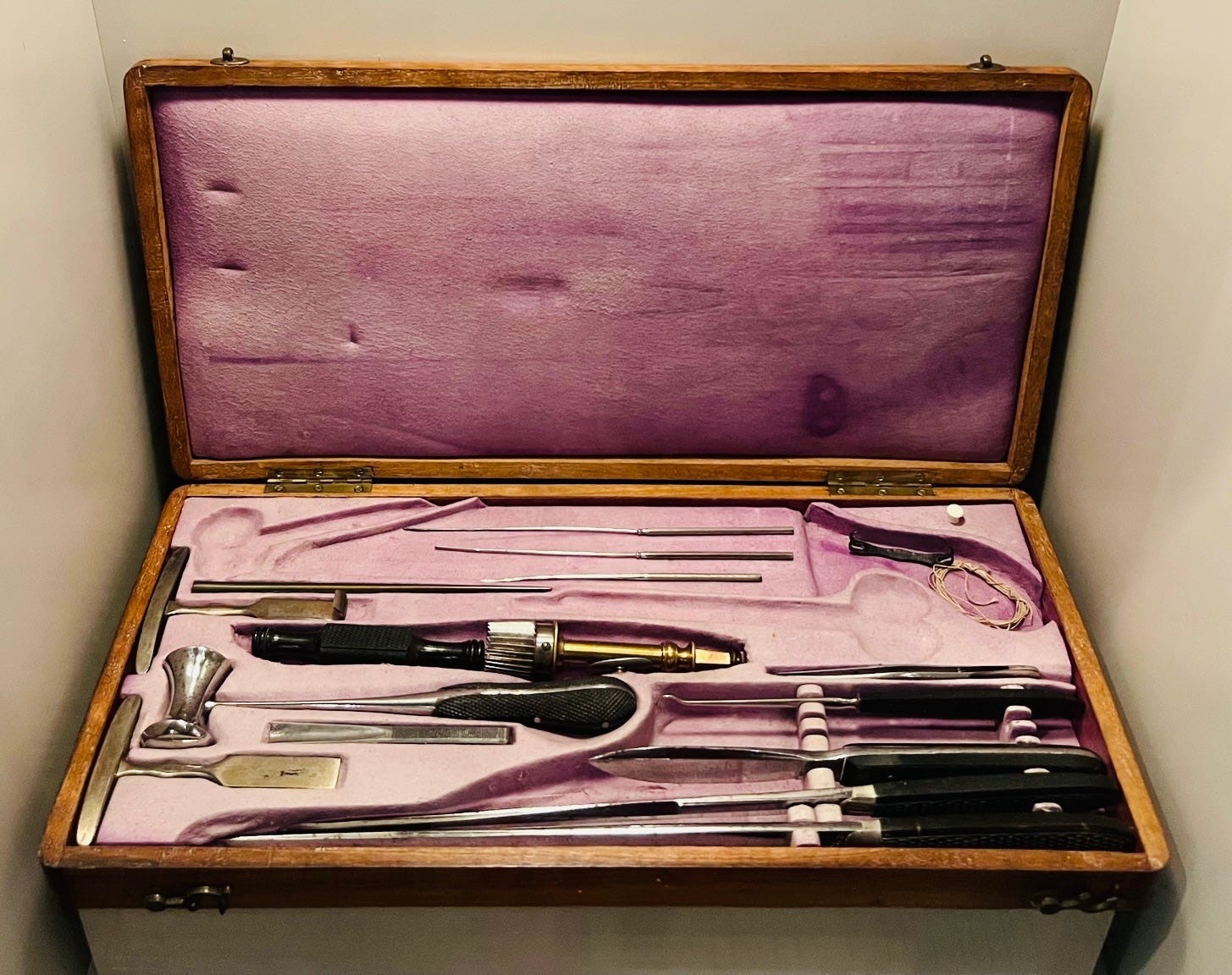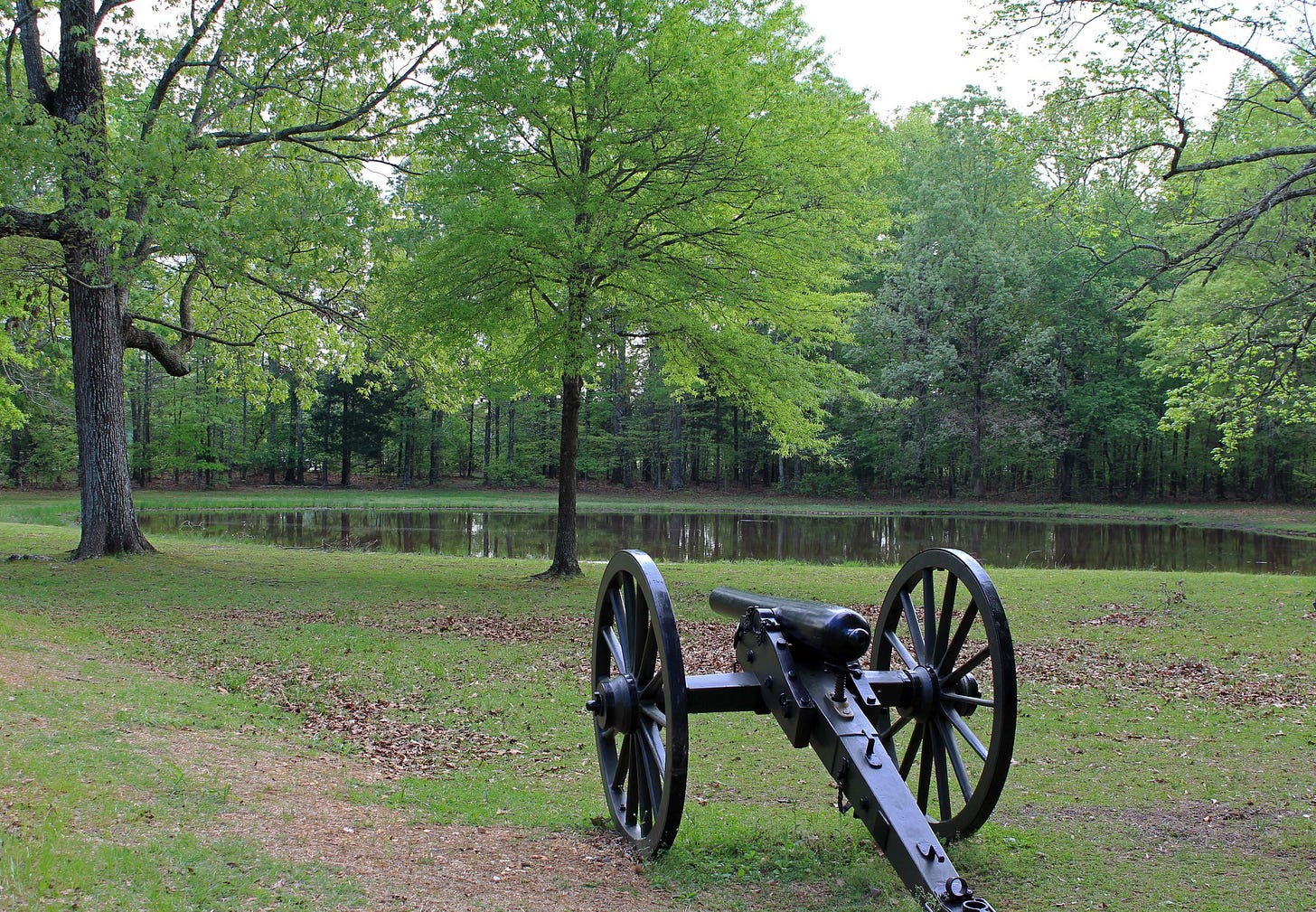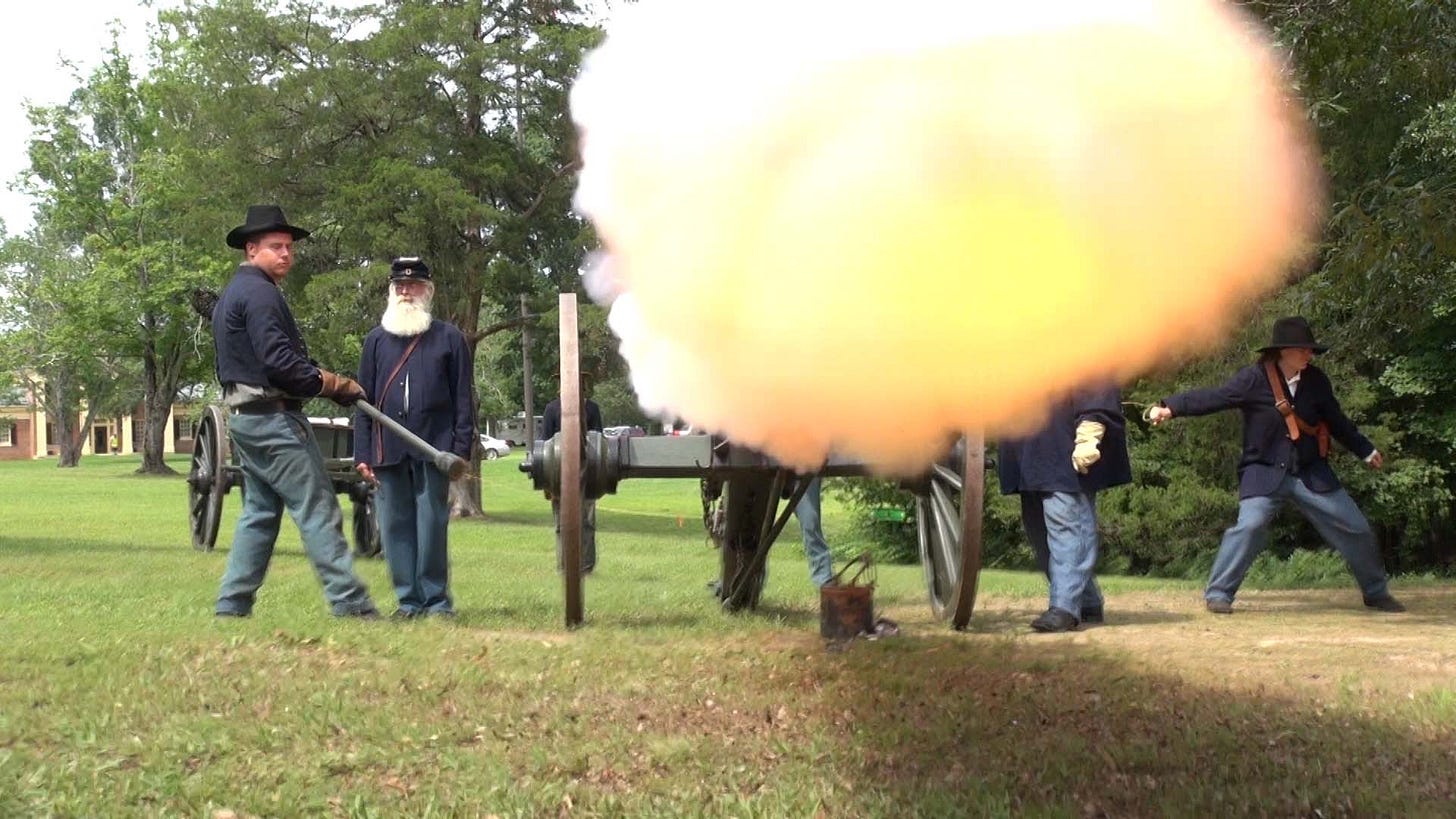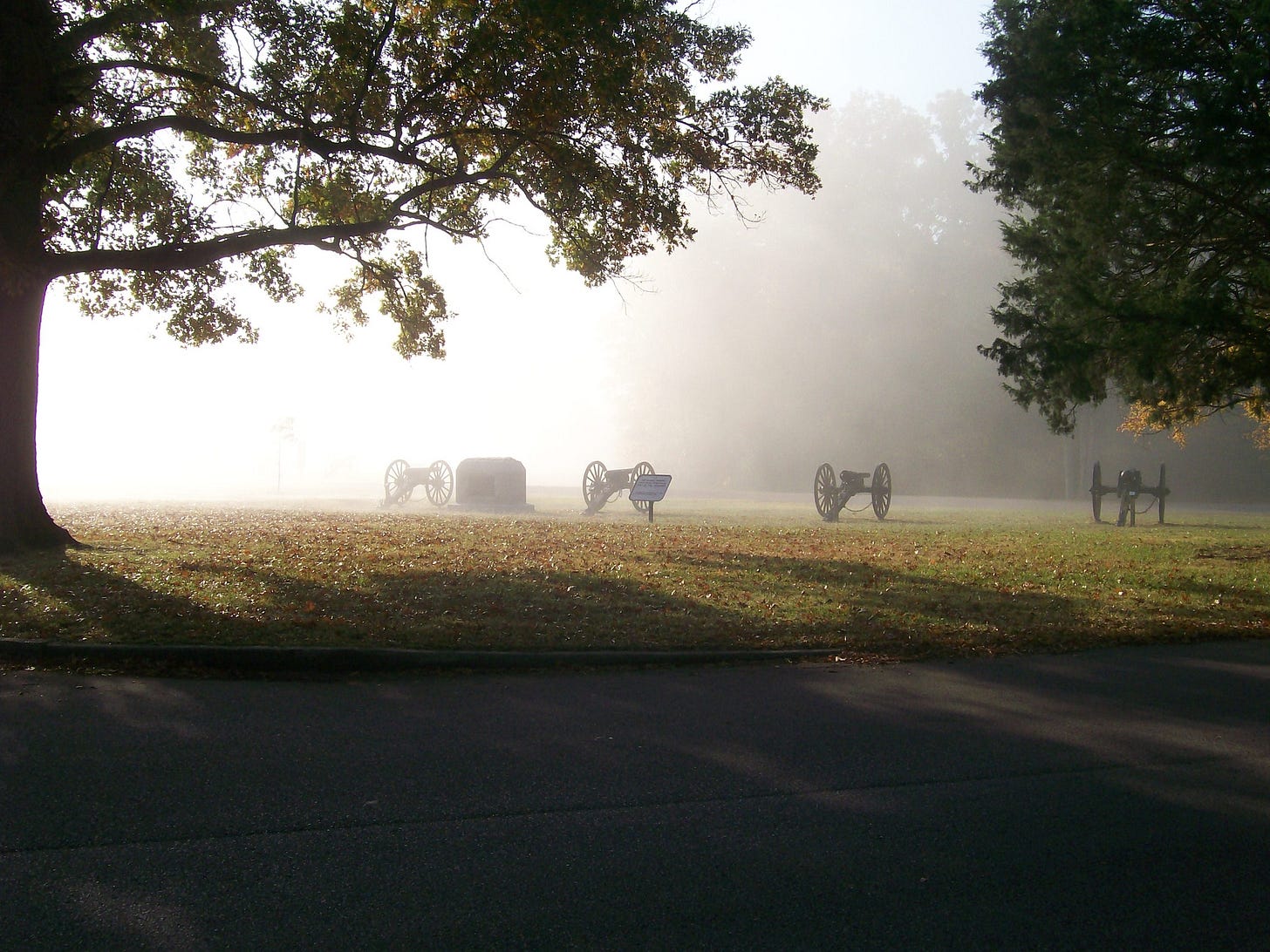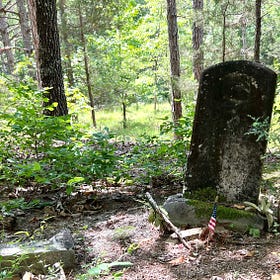Nestled along the serene banks of the Tennessee River, Shiloh National Military Park rises as a timeless monument to a 4-year conflict steeped in sorrow. The tranquil water belies the tumultuous echoes of a battle that once scarred the land above the river landing—a reminder of a nation's bitter strife and the countless lives interwoven in a tragic tapestry.
As the 163rd anniversary of that fateful clash is upon us, the park transforms into more than a repository of history. It’s a sanctuary where the whispered laments of bygone souls mingle with the present, inviting wanderers to pause, reflect, and embrace the lingering melancholy of a nation’s divided past.
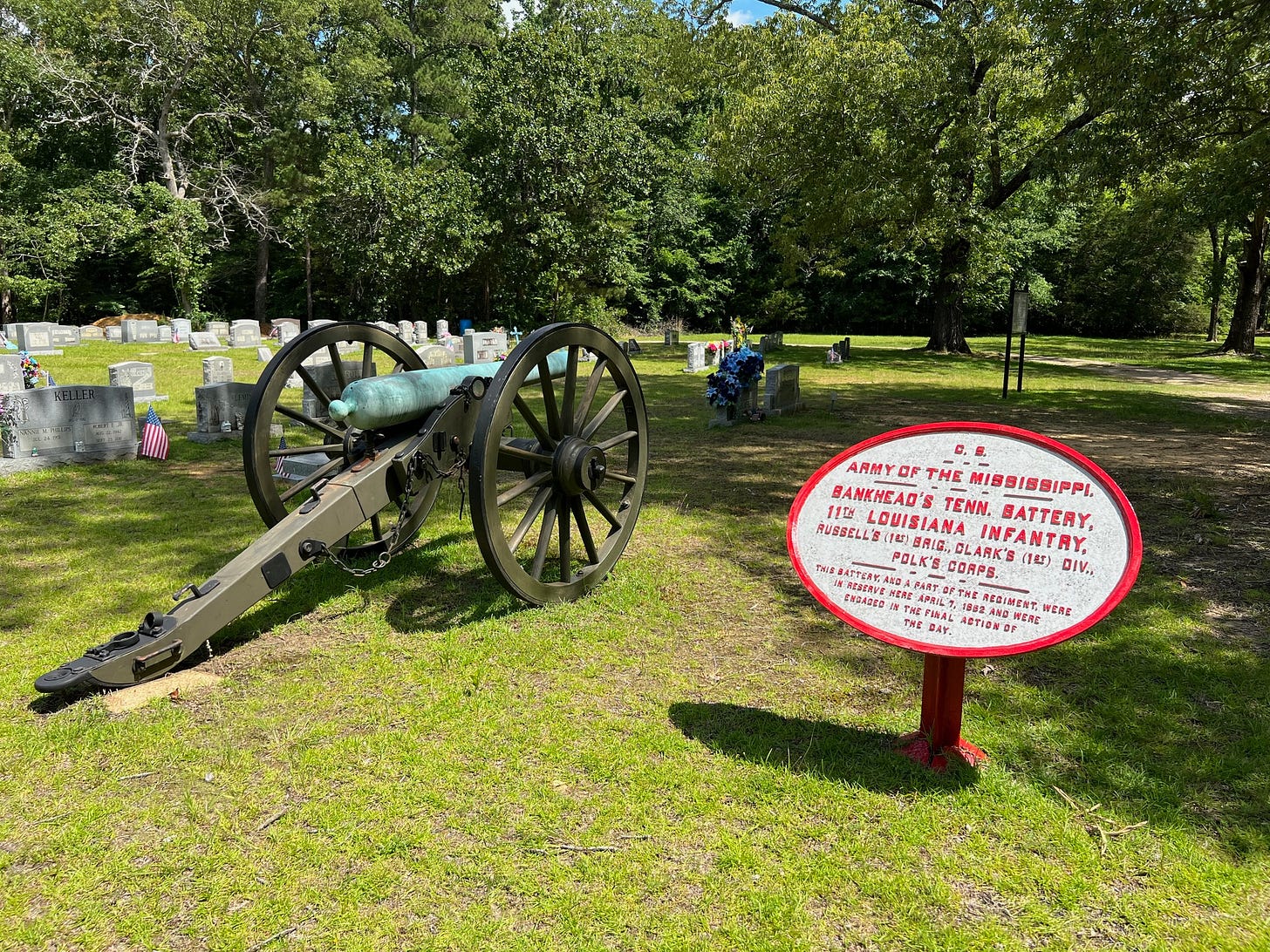
The Battle of Shiloh
On April 6-7, 1862, the tranquil fields and dense forests of southwestern Tennessee were engulfed in chaos as nearly 110,000 Union and Confederate forces clashed in a brutal confrontation that transformed the landscape into a theater of bloodshed. The battle resulted in roughly 23,750 casualties (wounded, killed, captured, or missing)—a staggering toll that underscored the war's escalating ferocity. The once-peaceful landscape became wrought with unimaginable violence as cannon fire and rifle shots pierced the air, and the cries of the wounded resonated through the woods.
The park now is so pleasant that it’s easy to overlook the horrors of 163 years ago. Wandering the vast grounds, I was swept away by an eerie reverie, imagining the terrible symphony of war that once filled these surroundings. In my mind’s eye, blue and gray figures clashed with desperate fury, their weapons unleashing a cacophony of destruction that roared across the land.
More than the vivid imagery, it is the haunting sound of rifles, the relentless thunder of cannons, and the pungent, sulfurous tang of exploding gunpowder mingled with the bitter stench of blood and sweat that conjure the true horror of those fateful days. Even the decaying remnants of men and horses, strewn about the battlefield as grim testaments to loss, seem to linger like restless spirits. This unprecedented carnage, the heaviest human toll in the history of American conflict up to that time, still whispers its sorrowful tale.
A Current Journey Through Shiloh
Congress established Shiloh National Military Park in 1894. Today, it spans more than 5,000 acres, meticulously preserving the battlefield's historic significance. Visitors should allow for at least three hours to tour the park and Visitor Center.
Visitor Center and Shiloh Battlefield Museum: The journey begins at the Visitor Center, where exhibits and interactive displays provide context to the battle's events. Artifacts and documents bring history to life, while a short film offers an overview of the conflict, setting the stage for exploration.
Shiloh Church: The reconstructed Shiloh Church, from which the battle derives its name, stands as a poignant symbol. This modest structure played a pivotal role in the battle's early moments. Its name, meaning "house of peace," starkly contrasts with the fierce combat that once surrounded it.
Monuments and Markers: Scattered throughout the park are more than 150 monuments and markers, each commemorating the regiments and individuals who participated in the battle. These memorials spread across the many acres of the park forge a tangible connection to the past.
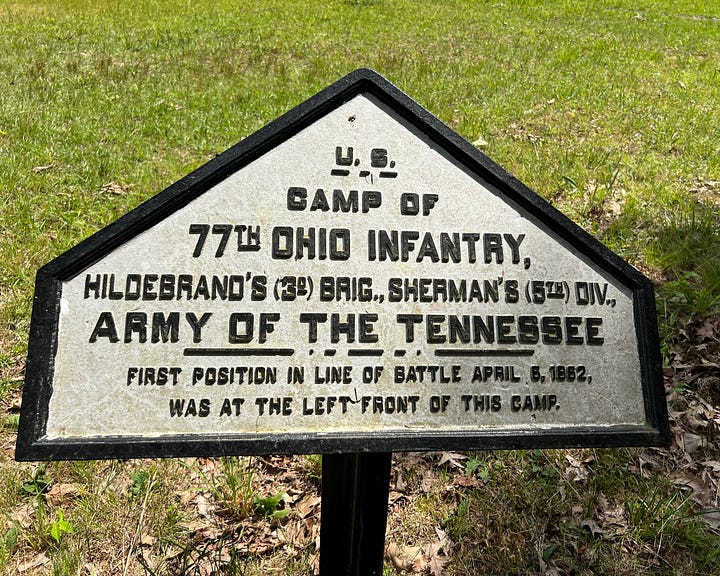
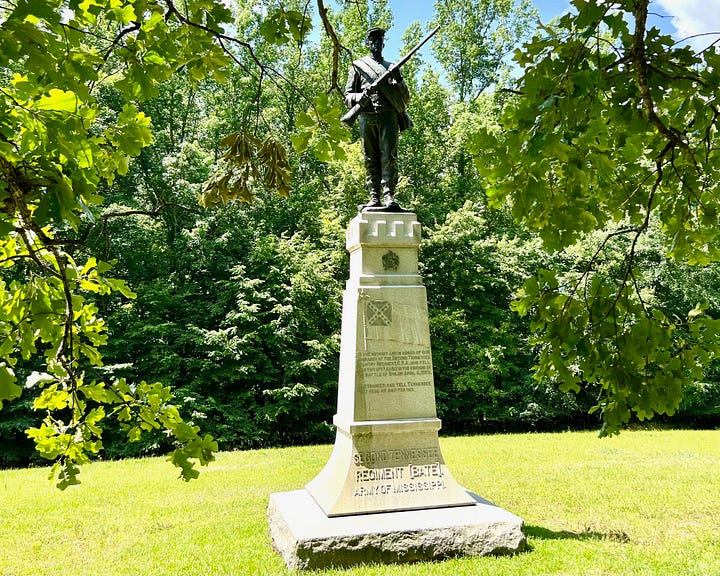
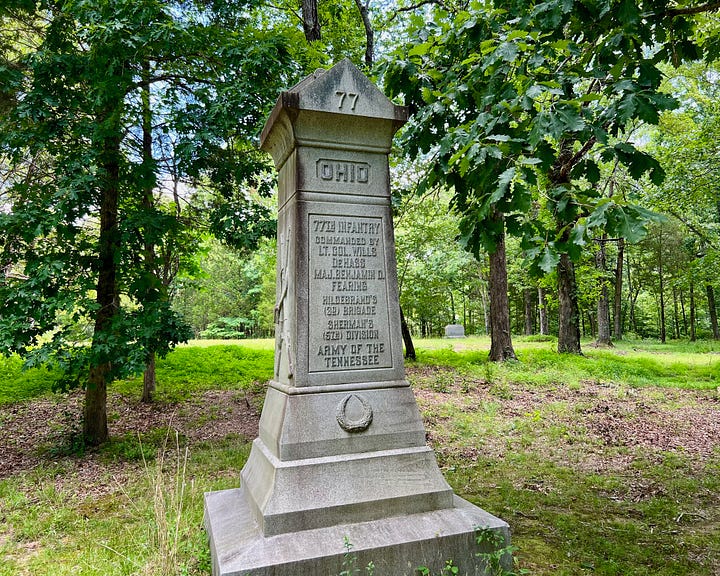
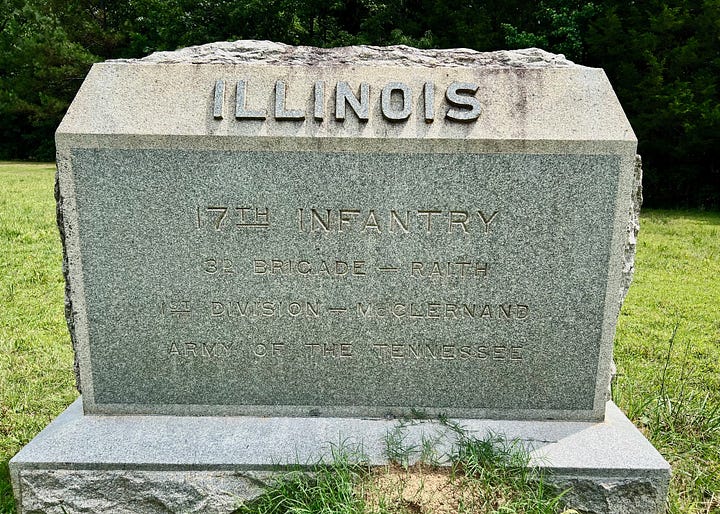
Sunken Road and the Hornet's Nest: This area witnessed some of the fiercest fighting, with Union troops steadfastly holding their ground against relentless Confederate assaults. The dense woods and deep ravine provided natural defenses, but the intense combat transformed the area into a deadly crucible. The Union's resolute defense here was instrumental in their eventual victory.
Pittsburg Landing: Situated along the Tennessee River, Pittsburg Landing served as a critical supply point for Union forces. You sometimes hear this historic 1862 conflict called the Battle of Pittsburg Landing rather than the Battle of Shiloh. Today, the calm waters and surrounding greenery starkly contrast with the frantic activity and desperate combat that once unfolded here.
Bloody Pond: This small, unassuming pond bears a name that reflects its grim history. During the battle, wounded soldiers from both sides sought water here, staining its waters red with blood. The pond remains a powerful symbol of the battle's human cost and the shared suffering of the combatants.
Marking the 163rd Anniversary
As the anniversary is upon us, Shiloh National Military Park has organized a series of events to commemorate this pivotal moment in history. (See our Statement on the Confederacy.)
Cannon Firing Demonstrations: On Saturday, April 5, visitors can experience live artillery demonstrations by the Shiloh volunteer cannon crew. These sessions, showcasing a 6-pounder field piece, will occur at 11:00 a.m., 1:00 p.m., 2:00 p.m., and 3:00 p.m., each lasting approximately 20 minutes and featuring two cannon firings.
Historical Hikes and Auto Tours: From April 6 - 8, park rangers will lead guided hikes and car caravan tours, delving into key aspects of the battle, from strategic movements to pivotal engagements at significant locations. To manage group sizes, hikes are limited to 45 participants, and auto tours to 10 vehicles.
In the waning light, Shiloh National Military Park unfolds as a realm where time and memory entwine with the spectral whispers of yesteryear. Each winding path, once trod by soldiers, now carries the soft echo of long-forgotten laments, while ancient trees stand as silent sentinels guarding secrets of the two-day bloodbath. The park’s serene vistas are interlaced with an indescribable aura—a delicate dance between solemn history and the otherworldly presence of spirits whose silent farewells linger in the cool evening mist.
Meanwhile, the park has become a canvas for uncanny tales as visitors and locals alike recount moments of inexplicable encounters—a ghostly figure glimpsed among the monuments, disembodied voices that murmur through rustling leaves, the sound of military drums in the distance, and sudden chills that hint at unseen presences. These reports of paranormal activity weave an additional layer of mystery into Shiloh’s storied landscape, inviting the intrepid to pause, reflect, and perhaps even glimpse a world where history’s echoes and an otherworldly realm converge.
We’ll be posting a taphophile tour of the Shiloh National Cemetery at a later date.
For further info on the church and its cemetery, please check out:
Shiloh Church Cemetery
What is now commonly known as the Battle of Shiloh started after roughly three hours of intense fighting around Shiloh Methodist Episcopal Church, South. Ironically, the name Shiloh means “house of peace,” but the small log structure was anything but peaceful on the Sunday morning of April 6, 1862. It was instead the site of great bloodshed and loss of …







